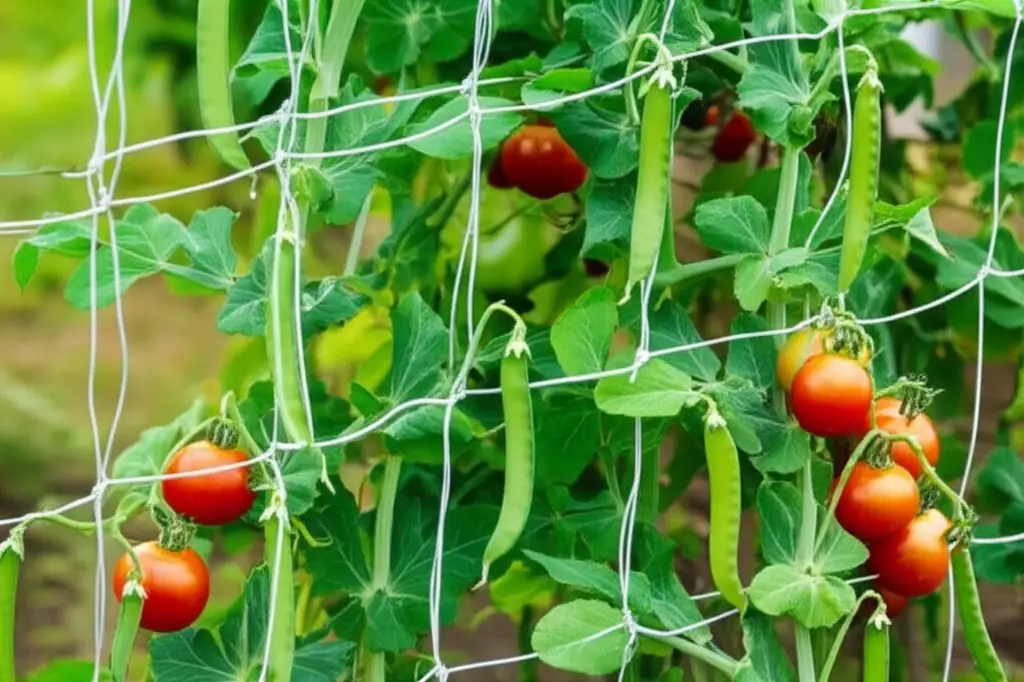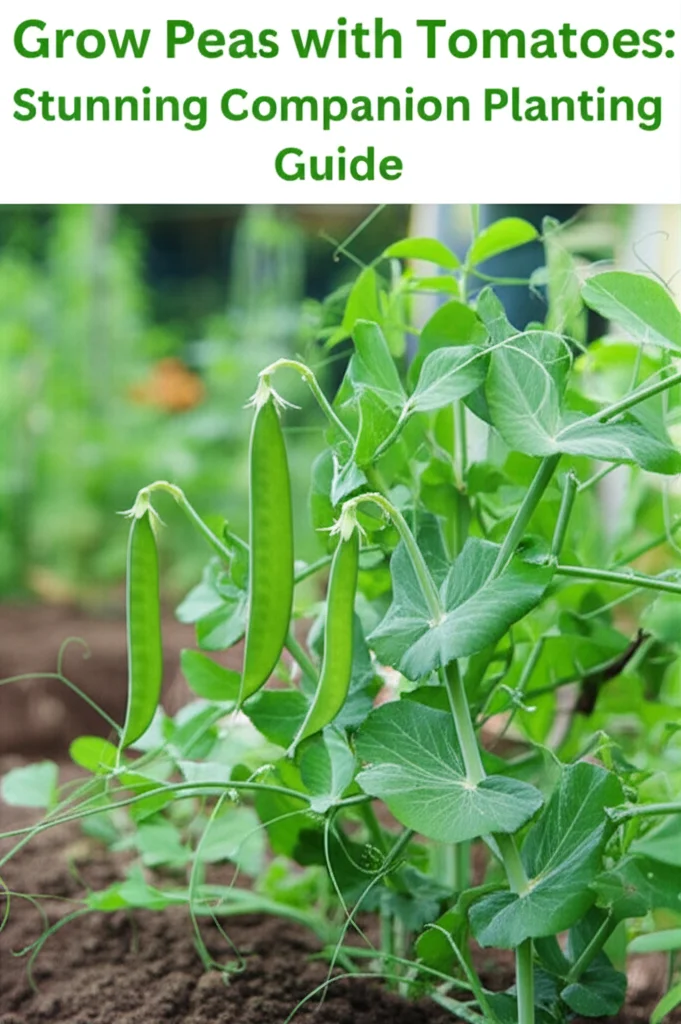Discover the secrets to successfully grow peas with tomatoes using companion planting techniques. This guide explores the benefits, provides step-by-step instructions, and answers frequently asked questions to help you maximize your harvest.

Introduction: The Magic of Companion Planting
Companion planting, the practice of strategically planting different species together for mutual benefit, has been used for centuries. This technique offers numerous advantages, including pest control, improved soil health, and increased yields. This guide focuses on the dynamic duo of peas and tomatoes, exploring how these seemingly different plants can thrive together and enhance your gardening experience.
Why Grow Peas and Tomatoes Together?
Natural Pest Control: Peas attract beneficial insects that prey on common tomato pests like aphids and spider mites. Conversely, the strong scent of tomato plants can deter pea pests.
Nitrogen Fixation: Peas, being legumes, fix nitrogen in the soil. This process enriches the soil, providing essential nutrients for heavy feeders like tomatoes.
Improved Soil Structure: The root systems of peas help improve soil aeration, benefiting the growth of tomato roots.
Space Optimization: By interplanting peas and tomatoes, you can maximize space utilization in your garden, leading to a greater overall yield in a smaller area.
Enhanced Growth: Some studies suggest that the presence of peas can enhance the growth and flavor of tomatoes.
Choosing the Right Varieties
Selecting compatible varieties is crucial for successful companion planting.
Peas: Bush peas are generally a better choice than climbing varieties when planted with tomatoes. Consider early-season pea varieties like ‘Alaska’ or ‘Little Marvel’ for a quicker harvest before tomatoes need the space.
Tomatoes: Determinate or bush tomato varieties are ideal for pairing with peas. Choose disease-resistant varieties like ‘Roma’ or ‘Celebrity’ for best results.
Step-by-Step Planting Guide
1. Soil Preparation: Ensure your soil is well-drained, rich in organic matter, and has a pH between 6.0 and 7.0 . Amend the soil with compost or aged manure before planting.
2. Timing: Plant peas as soon as the ground can be worked in early spring. Start tomato seeds indoors about 6-8 weeks before the last expected frost. Transplant tomatoes outdoors after the danger of frost has passed and the soil has warmed up.
3. Spacing: Plant peas in rows or blocks, leaving about 2-3 inches between plants. Space tomato plants about 2-3 feet apart, depending on the variety.
4. Interplanting: Plant peas between rows of tomatoes, allowing enough space for both plants to mature. Alternatively, plant peas around the base of tomato cages before the tomato plants get too large.
5. Support for Tomatoes: Stake or cage tomato plants to provide support as they grow. This prevents the plants from sprawling and shading the peas.
6. Watering: Water deeply and regularly, especially during dry periods. Avoid overhead watering to prevent fungal diseases.
7. Fertilizing: Tomatoes are heavy feeders and benefit from regular fertilization. Use a balanced fertilizer or compost tea throughout the growing season. Peas generally don’t require additional fertilizer due to their nitrogen-fixing abilities.
8. Pest and Disease Management: Monitor plants regularly for signs of pests or diseases. Handpick pests or use organic pest control methods as needed.
Growing Tomatoes: The Ultimate Guide – Learn more about growing the perfect tomatoes.
Pea Growing Guide – For more information on growing peas, visit our comprehensive guide.
Authoritative Sources:
University of Missouri Extension: Companion Planting
FAQs
Q: Can I plant tall pea varieties with tomatoes? A: Climbing peas can compete with tomatoes for sunlight and space. It’s best to stick with bush varieties for companion planting with tomatoes.
Q: Do I need to fertilize peas when planted with Tomatoes? A: Usually not. The nitrogen peas fix often provides enough for both plants. Monitor pea leaves for signs of nitrogen deficiency (yellowing).
Q: When should I plant the peas and tomatoes? A: Plant peas in early spring as soon as the ground can be worked. Start tomato seeds indoors 6-8 weeks before the last frost and transplant outdoors after the danger of frost has passed.
* Q: How far apart should I plant peas and tomatoes? A: Plant peas 2-3 inches apart and tomatoes 2-3 feet apart, adjusting spacing as needed for your specific varieties.
Conclusion: Reaping the Rewards of Companion Planting
Growing peas with tomatoes is a simple yet effective way to enhance your gardening experience. The mutual benefits of these two companion plants, from pest control to improved soil health, can lead to a healthier and more abundant harvest. By following the steps outlined in this guide, you can unlock the full potential of your garden and enjoy the delicious fruits (and vegetables!) of your labor. Whether you’re a seasoned gardener or just starting out, exploring the principles of companion planting can transform your garden into a thriving ecosystem. So, prepare your garden beds and embrace the magic of growing peas and tomatoes together!

